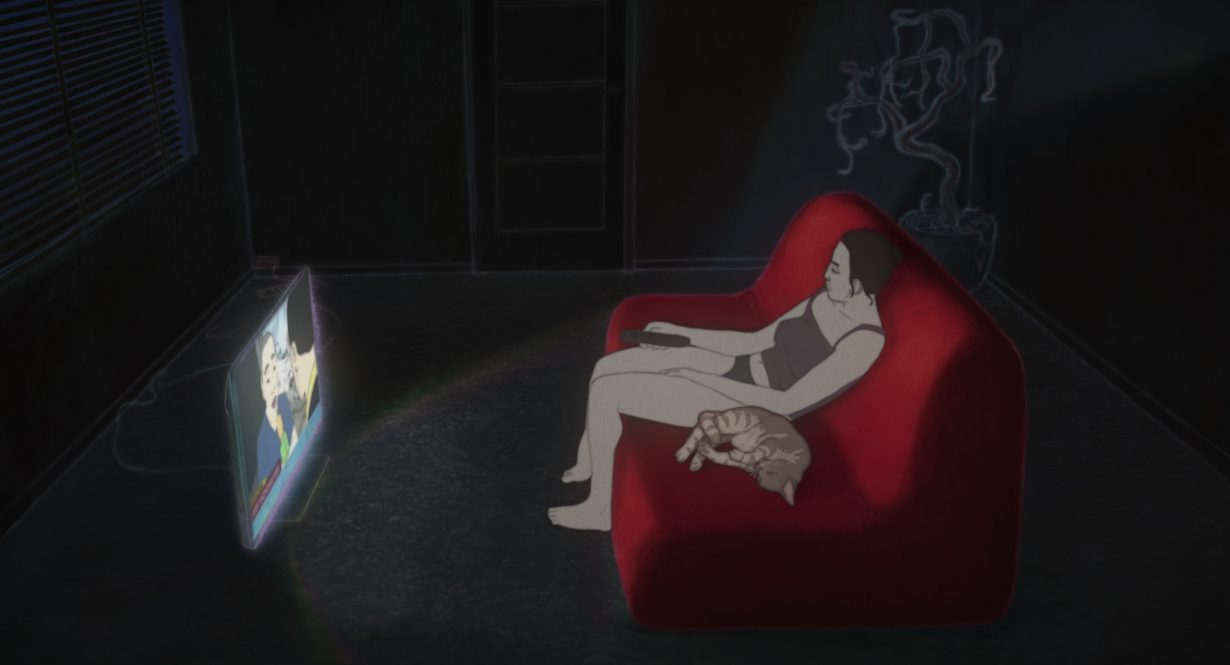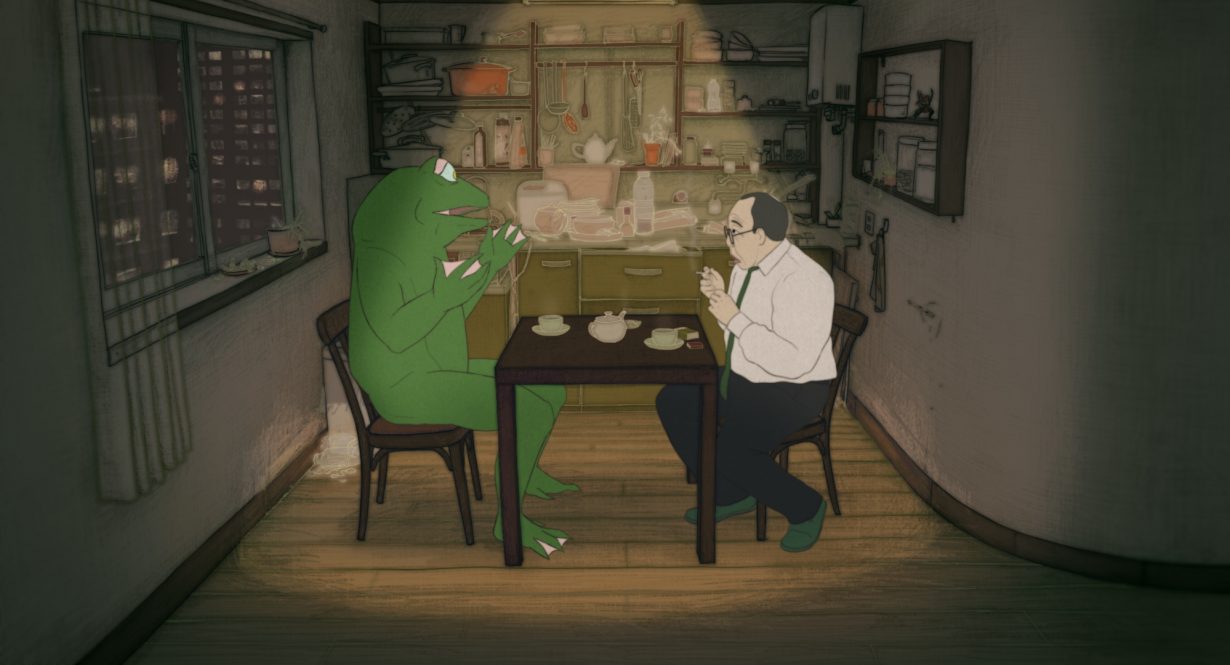An animated feature adaptation of Haruki Murakami’s short stories explores the interstices between reality and illusion
When asked in an interview with online trade-magazine Cineuropa, during his new film’s festival run, how he had envisioned adapting a selection of Haruki Murakami’s short stories into an animated feature film, director Pierre Földes offered a breezy answer. The Hungarian-British composer, painter and filmmaker explained that, after contacting Murakami to gauge the author’s interest in the project, he had received a generous greenlight: he could choose whichever of Murakami’s short stories he wanted. Eventually, Földes settled on an amalgamation of six that had left the strongest impression on him – ‘Super-Frog Saves Tokyo’ (2002), ‘Birthday Girl’ (2002), ‘Dabchick’ (1981), ‘The Wind-up Bird and Tuesday’s Women’ (1986),‘U.F.O. in Kushiro’ (2001) and ‘Blind Willow, Sleeping Woman’ (2006). That last would give Földes’s film, his feature-length debut, its title.
Instead of adapting the stories formulaically, Földes has opted for a more playful approach. Set in the aftermath of the 2011 Tōhoku earthquake and tsunami that led to the Fukushima Daiichi nuclear disaster, the film interweaves the stories of three ordinary people: Komura, an apathetic bank employee; his wife Kyoko, who’s glued to the earthquake news unfurling on TV for days on end; and Katagiri, a diligent and unassuming accountant at the Shinjuku branch of the Tokyo Security Trust Bank. Whereas Katagiri’s storyline is as self-contained in the film as it is in Murakami’s ‘Super-Frog Saves Tokyo’, Komura and Kyoko’s stories synthesise a wealth of characters who populate different narratives in the original stories.

Komura, in particular, epitomises Murakami’s typical first-person narrator: a cisgender heterosexual male character who often conveys the image of a man swayed by both the mundane and absurd happenstances of life, to which he reacts with placid resignation. Murakami’s female characters, on the contrary, have been recently put under the scrutiny of a feminist lens by Japanese writer Mieko Kawakami. During a series of interviews that Murakami gave to Kawakami in 2017 – an excerpt of which was published on Literary Hub in 2020 – Kawakami addresses the arguably limited role women play in Murakami’s books, where they mostly act as ‘gateways, or opportunities for transformation’ for their male counterparts, which leads to them being ‘forced into an overly sexual role, simply because they’re women’. In the original stories, female characters are sparse and on the margins. Even when they occupy a greater portion of the story, as in ‘Birthday Girl’, they’re limited to third-person narration, eschewing deeper characterisation and introspection. But Földes’s Kyoko is more solidly fleshed out; agency and a sense of purpose, often attributed to men alone in Murakami’s work, are bestowed on her too. Although allotted less screentime than Komura and Katagiri, Kyoko’s character is nevertheless magnetic, and her actions trigger her husband’s quest for self-discovery when she leaves him; ‘living with you is like living with a chunk of air’, she writes in her goodbye note. In Blind Willow, Sleeping Woman, Komura’s trajectory is deeply enmeshed in the woman’s absence, and his story is left hanging.

The characteristic tension in Murakami’s fiction, between the real and the imaginary – between phenomenological and metaphysical events – lends itself to being vividly captured in animation. In Blind Willow, Sleeping Woman, transitions between waking and illusory states are evanescent and envelop the film in gossamer, inviting the viewer to delicately untangle its mystery. Art director Julien De Man (who led on background art for Sylvain Chomet’s The Illusionist, 2010, and Michaël Dudok de Wit’s The Red Turtle, 2016) crafts bucolic landscapes and evocative interior settings where a muted colour palette is occasionally illuminated by a lambent light. Against such backgrounds, Földes’s characters are rendered by an experimental animation technique that relies on live-action filming with real actors, providing rather expressive reference points for the animators. While the actors’ heads are swapped for 3D models of their respective characters’ faces, their outline is traced over and their facial expressions, movements and emotions are recreated. Black and white outlines help position people and objects alike in the space; in particular, a white outline confers a ghostlike aura on objects and characters the viewer is invited to focus less on. Line-drawing animation is especially effective in the film’s most apparent oneiric sequences, conveying a sense of surreal displacement.
“What you see with your eyes is not necessarily real,” whispers Frog to Katagiri mere moments before liquifying into a putrescent puddle in the second half of the film. Together, they have fought against and defeated the gigantic, subterraneous Worm, which threatened to destroy Tokyo by causing an earthquake, thus saving the city from devastation. For Katagiri, Frog represents the recognition, friendship and affection he has long sought within his social and professional circles – imaginary or not, Frog saves not only Tokyo but Katagiri too. By exploring the interstices between reality and illusion, Blind Willow, Sleeping Woman embraces and thrives in liminality.
